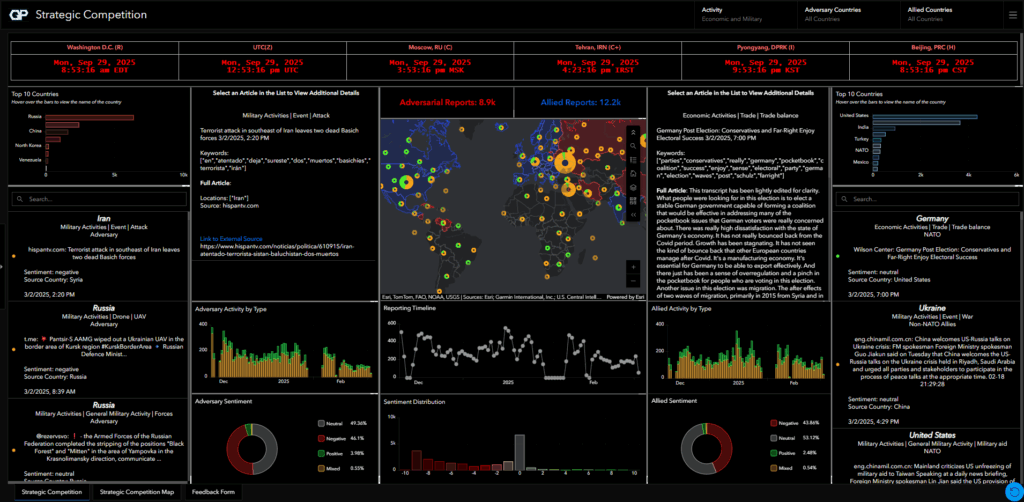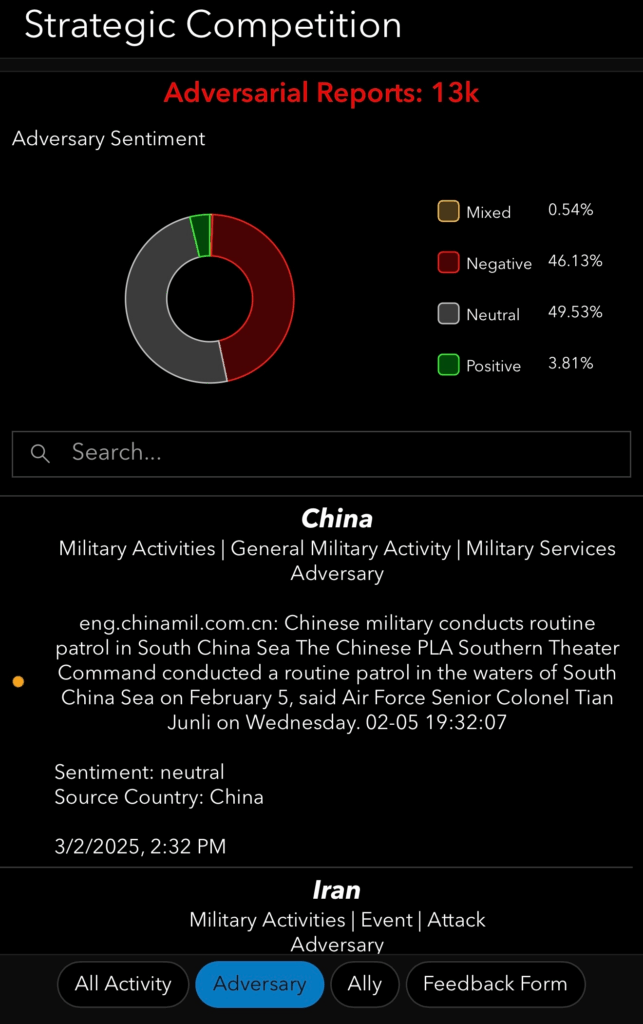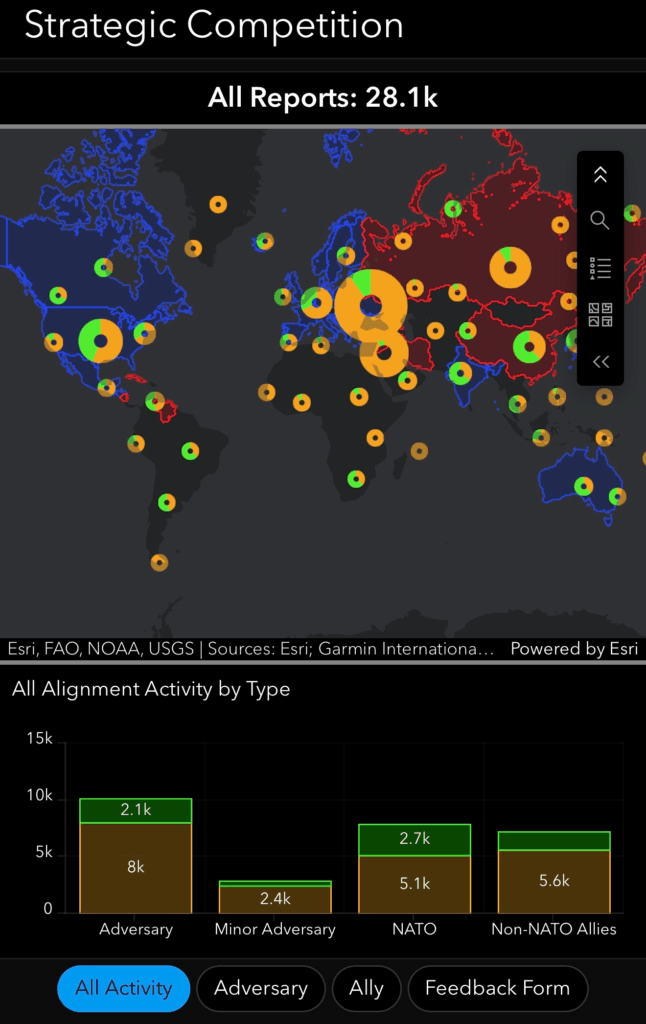Understanding Strategic Competition
Strategic competition is commonly understood as the continuous rivalry between nations or organizations as they work to secure lasting advantages in areas like economic strength, military capabilities, technological progress, and political influence.
In this edition of Project Cognizance, our Strategic Competition dashboard highlights two of those key areas; economic and military activity. Using only publicly available, open source information, the dashboard keeps track of a range of events shaping these areas, including:
Economic Activity: Trade agreements and activities, sanctions, economical maneuvers, indicators, growth and cryptocurrency.
Military Activity:Troop deployments, military training exercises, drone related activity, attacks and counterattacks, ceasefires, etc.
Allies vs. Adversaries
Where do we stand in the global strategic competition? How are nations like Russia and China positioning themselves? How do their actions shape the responses of the U.S. and its allies?
The Strategic Competition dashboard captures real-time reports on global activities from a range of sources, offering a dynamic perspective on shifting alliances, economic movements, and military developments.
Understanding these reports isn’t just about tracking events—it’s about recognizing patterns that shape the future. A trade agreement today might hint at a shifting alliance tomorrow. A sudden military buildup could signal tensions that ripple across multiple regions. What does that mean for governments trying to maintain stability? For businesses looking to expand into new markets? Or for analysts working to predict the next geopolitical flashpoint?
Making the Most of the Dashboard's Insights
Strategic competition isn’t static; it evolves with every decision made by global players. To make the most of the dashboard, users can leverage several key features to refine their strategies and stay ahead of emerging threats. Organizations can use this intelligence to refine their strategies, ensuring they stay ahead of emerging threats and opportunities. Policymakers can anticipate diplomatic challenges before they escalate, while businesses can navigate risks and make informed investments in volatile markets.
Navigating the Dashboard Effectively
- Interactive Geospatial Mapping: Visualize economic and military activities across different regions. The map allows users to zoom into specific areas to analyze ongoing developments and shifts in alliances.
- Sentiment Analysis: Understand the broader context of global events by evaluating public sentiment. This feature helps anticipate geopolitical tensions and economic shifts before they fully materialize.
- Country-Level Insights:Drill down into individual nations to examine related reports from both allied and adversarial countries.
- Customizable Filters: Tailor the data to specific needs by filtering information by country, activity type, or timeframe, allowing for a more focused analysis.
By using these tools effectively, organizations, policymakers, and analysts can uncover deeper insights, recognize emerging threats, and make informed strategic decisions. The Strategic Competition dashboard isn’t just about seeing what’s happening—it’s about understanding what it means and what comes next.
Imagine the Possibilities with Enhanced Data
While this dashboard leverages open-source data, imagine the value of incorporating private or proprietary datasets. By integrating additional data sources, organizations can unlock:
- Industry-Specific Analysis: Understanding how geopolitical shifts impact critical sectors such as defense, energy, and technology.
- Deeper Trend Analysis: Examining long-term patterns in military operations and economic policies.
- Risk Assessment Models: Developing strategic responses tailored to evolving global challenges.
Dashboard Screenshots


